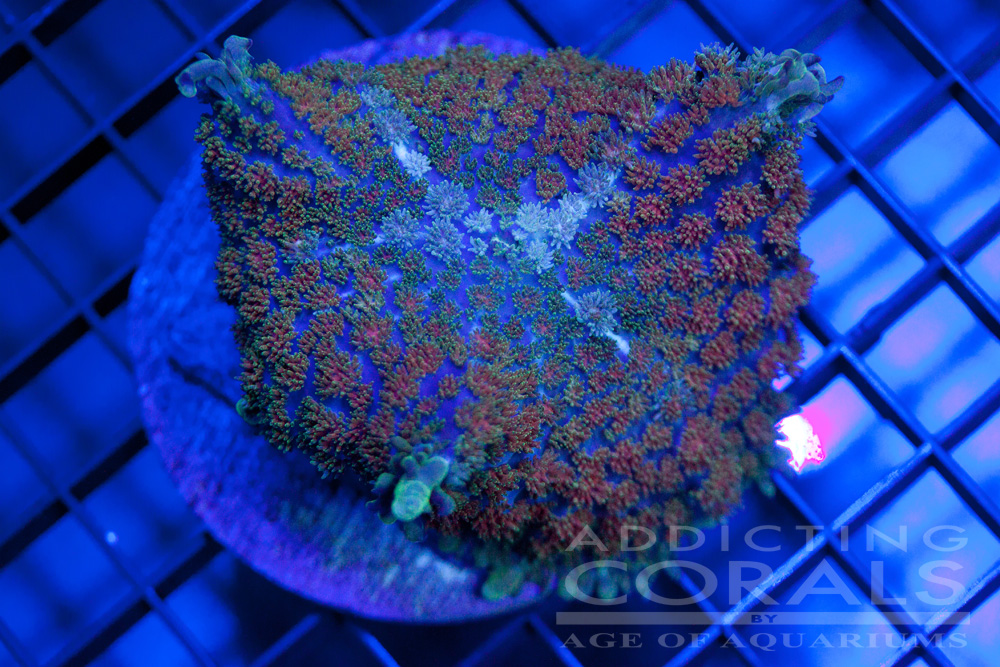

The Old Psychic Lady with the Evil Eye Who Reads Fortunes and Knows Everything Before it Happens.These little anemone like corallimorphs can sting other corals if they are allowed to spread over the reef. We like to use a chisel for pruning by scraping the ones growing out of the desired location off the rock. Troubleshooting: If placing them on the reef all one needs to do is keep them managed in one section desired. Be sure to rub a little reef glue onto the reef section and there is enough reef glue on the coral plug to set it securely.Ĭlick here for our favorite epoxy and reef glues. The epoxy part can be skipped using only the extra thick reef glue gel. Be sure the coral is fully secure, the coral should never fall off the reef. Press the coral disk onto the desired location and press the epoxy flat around the disk. Add a few small daps to the tip of the cone dabbing the glue so it really sticks to the epoxy. Mix up enough two part epoxy to create a small mound and dab it a few times into the glue to get it tacky then press and mold a conical shape. Add a small amount of coral glue to the underside of the disk. Clip off as much of the plug or disc possible. We have listed out the details for every mushroom so you know and can decide on where to place them on the reef.Īttachment: Use epoxy and or reef glue gel. Some spread faster than others and some hardly spread at all and have to be forced to multiply. Some hobbyist like to place these on a separate rock island to keep them from spreading all over the reef. The ricordea Yuma comes for the south Pacific region and the ricordea Florida come from the Caribbean region. There are two different types of ricordea mushrooms. Ricordea can have multiple colors and different patterns making them some of the more interesting of this genus. The ricordea species have small tentacles spread out over the disk resembling mini carpet anemones. This dwarf variety is quite early to flower and makes. Some variations of the rhodactis can produce bubbles we like to call bounce mushrooms. 7-8 inch plants produce a wide variety of colors, including reds, pinks, whites, and a host of others. The rhodactis species have a little texted like surface where small tentacles protrude from the disk. These little gems can do really well and some have extraordinary colors. Most mushroom corallimorpharians asexually reproduce and can multiply well. For a more even complexion, Magic Molecule The Solution uses hypochlorous acidsomething usually produced by white blood cellsto. Mushroom anemones are corallimorpharians and are known as the transition of stony coral to soft coral. Magic Molecule The Solution, Early-Release 2-Pack, 25. The psilocybes, containing psilocybin and psilocin, are the friendlier magic mushrooms.

01-.1 salinity 1.026įeeding: mushroom will consume most foods and pellets and the target feeding can be placed directly on the mushroom disk. There are an estimated 209 species of trippy mushrooms, which mainly fall into two broad groups. Grown in our California coral farm where we provide zero impact corals Original Location Range: Indonesia, Coral Triangle, South Pacific Carrying colors of purple, yellow, orange and other color variations. Picked this up in a trade around 2017 and it has been growing well for us ever since. Then delicately seperate the tissue with scalpel. I score the plug or rock with a dremel directly under the foot and then cut thru the plug or rock first. The key to success is make sure whatever you cut, you get a piece of the foot still attached to the plug. This is an amazing multicolored rhodactis mushroom coral. You can cut most mushrooms anywhere and theyll eventually form a new mouth.


 0 kommentar(er)
0 kommentar(er)
